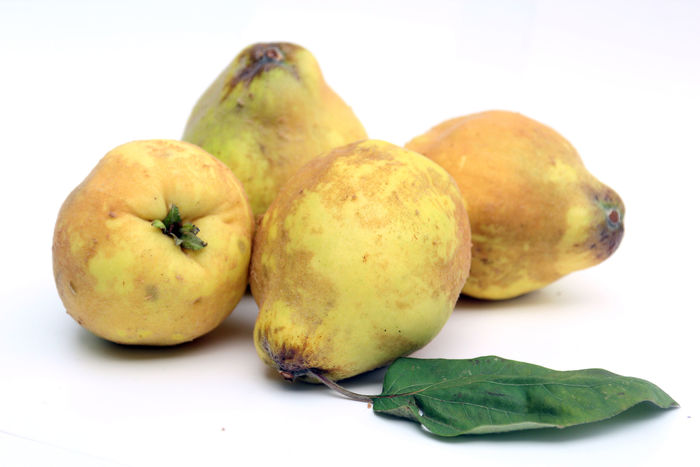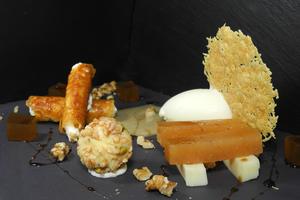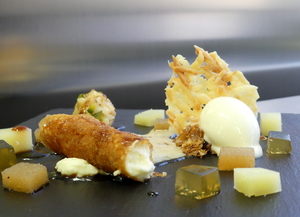Quince
Quince is the fruit of the quince tree, a tree from the Rosaceae family that reaches up to 4 metres of height. This family has more than 2,000 species of herbaceous plants, bushes and trees distributed along temperate regions around the world. The main European fruits, rose bush included, belong to this family.
The quince is a fruit with a low sugar content, so its caloric content is also low. Its main disadvantage lies in the fact that it is usually consumed as quince jelly, which contains a lot of added sugar and whose caloric content increases a lot.
The best picking time is from the end of September to February.
When buying quince we must pick those fruits with a yellowish intact skin, without marks or bruises. Those with a green skin are not ripe yet and spots in their skin show that they are too ripe. This is irrelevant if they are going to be cooked immediately.
Once they are picked, quinces can be preserved for two or three months. At home, they can be well preserved in a fridge for a few weeks, wrapped in paper individually. In case quinces are green and need to ripen faster, they can be left at room temperature.
-
Type of dish
- Beers
- Cocktails
- Breakfasts and brunch
- Burguers
- Juices, milkshakes and beverages
- Shellfish
- Bread and pastries
- Pizzas, patty
- Dessert
- Pasta
- Sándwich
- Pastries
- Finger foods
- Ice creams and sorbets
- Legumes
- Salads
- Eggs
- Patty
- liqueur
- Harvard plate
- Main course
- Meats
- Fish
- Birds
- Vegetables
- Soups and creams
- Rices
- Coffee, chocolate and infusion
- Cheeses
- Appetizers and canapes
- Temperature
- Cuisine type
- Additional culinary preparation
- Conservation technique
- Seasonal recipes
-
- Aromatic herbs
- Beverages
- Big game hunt
- Bread and pastries
- Canned goods and pickles
- Cereals
- Condiments, spices and additives
- Cooked, salted, preserved and cold meats
- Dried fruits and nuts
- Dry pulses
- Edible oils and vinegars
- Eggs and derivatives
- Feathered game hunt
- Fish cuts
- Fishes
- Insects
- Kitchen and bakery tecniques
- Kitchen and bakery utensils
- Meat cuts
- Meats
- Milk, cream and derivatives
- Mushrooms
- Offal
- Pasta, rice, flour and derivatives
- Poultry
- Seafood
- Service techniques
- Service utensils
- Vegetables cuts
- Vegetables, fruits, tubers and seaweed



